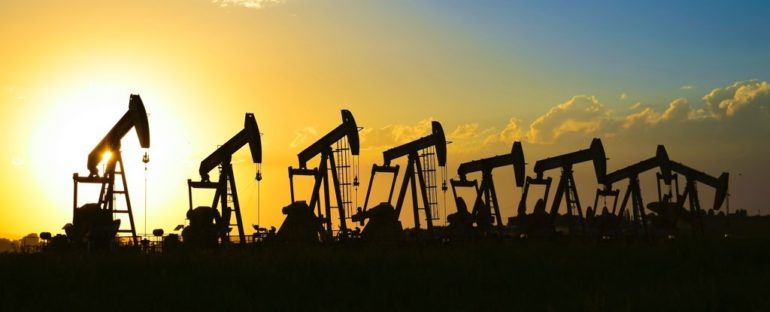The legacy of abandoned oil wells in the US isn’t hard to see, even leaving gaping holes in the landscape that are frightening to look at. But their invisible aftermath is more alarming still.
Across the US and Canada, there are millions of abandoned or inactive oil and gas wells left behind by their former operators, and often improperly sealed. These stranded reserves – sometimes called orphan wells – may have been deserted by humans, but they are not a spent force.
Abandoned wells, hundreds of thousands of which are thought to be undocumented, are estimated to spew vast amounts of heat-trapping methane emissions into the atmosphere, far exceeding the projections of environmental authorities such as the US EPA.
Conservative estimates suggest abandoned wells might represent up to 4 percent of methane gas emissions from oil and gas systems in the US, although the veracity of such estimates is debatable, given the relative lack of on-the-ground measurements.
It gets worse – in part due to the fractured nature of abandonment. Aside from outright abandoned wells, a sub-category of inactive wells known as ‘shut-ins’ can pose the same methane-leaking risks, but fly under the radar in official figures.
Shut-ins are idle wells that are not currently being used for oil production, likely due to market conditions, but which could be re-activated in the future. Despite all the growing concern over just how big the abandoned wells fiasco is, shut-ins, many of which are uncapped, have never been measured for their own contribution to greenhouse gas emissions.
In a new study by scientists at the University of Cincinnati, researchers sought to rectify that.
Biogeochemist Amy Townsend-Small and her research assistant Jacob Hoschouer visited the sites of 37 inactive wells located on private property in Texas’s Permian Basin, the largest oil production basin in the US, which on the whole produces roughly 60 percent higher methane emissions than the national average for oil and gas production regions.
Part of the problem, the researchers found, is shut-ins. While many of the inactive wells measured for elevated methane levels showed either no leaks or little leaking, several were leaking methane in high amounts, up to a maximum of 132 grams per hour.
“Some of them were leaking a lot,” Townsend-Small says. “A few sources are responsible for most of the leaks.”
While the problem may vary from shut-in to shut-in, the high readings of the outliers pushed the average for all the inactive wells measured to 6.2 grams per hour – which is higher than the average output for abandoned wells in other western states (including Colorado, Utah, and Wyoming) but lower than counterparts in the Appalachian Basin in the US northeast.
If the same levels of leaking were found for all of Texas’s roughly 100,000 wells, it would be about 5.5 million kilograms of methane released annually – around the equivalent of burning 150 million pounds of coal each year, the researchers say.
Again, though, we can’t yet conclude too much from the existing data, since there are millions of abandoned or inactive wells in North America, and many more measurements need to be taken.
Once we do, however – if similar patterns of leaking bear out across all sites – there could be practical solutions to fixing most of the leaks by focusing on the worst offenders.
“If you want to make a big impact, you only have to fix the big leakers,” Townsend-Small told Grist and the Texas Observer.
Overall, inactive wells seem to produce less methane emissions than active oil-producing wells, but these largely neglected and unmaintained sites also present other environmental problems.
In their expedition, Townsend-Small and Hoschouer observed evidence of polluted water pooling at five of the wells, with brine leaks producing ponds surrounded by dead vegetation and a strong gassy smell.
“I was horrified by that,” Townsend-Small says.
“I’ve never seen anything like that here in Ohio. One was gushing out so much water that people who lived there called it a lake, but it’s toxic. It has dead trees all around it and smells like hydrogen sulfide.”
Ultimately, there’s a lot more work to do, both in assessing the environmental and health impacts of what these tapped but unspent wells could represent to the planet and its people.
The Biden administration has already strongly signaled an intention to begin addressing the toxic legacy of abandoned wells, encompassed in a US$16 billion spending plan.
In addition to plugging the worst leakers and conducting more measurements at inactive wells, the researchers say regular inspections of shut-ins could help prevent neglected sites from becoming problematic emitters, and infrared cameras could be set up to identify leaks.
Ideally, of course, all of this would have been done yesterday. While carbon dioxide reductions have been the central focus of many climate initiatives, the unfortunate truth is that in the shorter term, methane is a far more potent greenhouse gas – with a warming potential 28 times greater over a 100-year period.
Despite the severe dangers, emissions are entirely headed the wrong way. Just this month, a new analysis by the NOAA showed annual global methane emissions just experienced their largest year-on-year increase since records began in 1983.
Old wells aren’t the only things that are broken.
The findings are reported in Environmental Research Letters.



